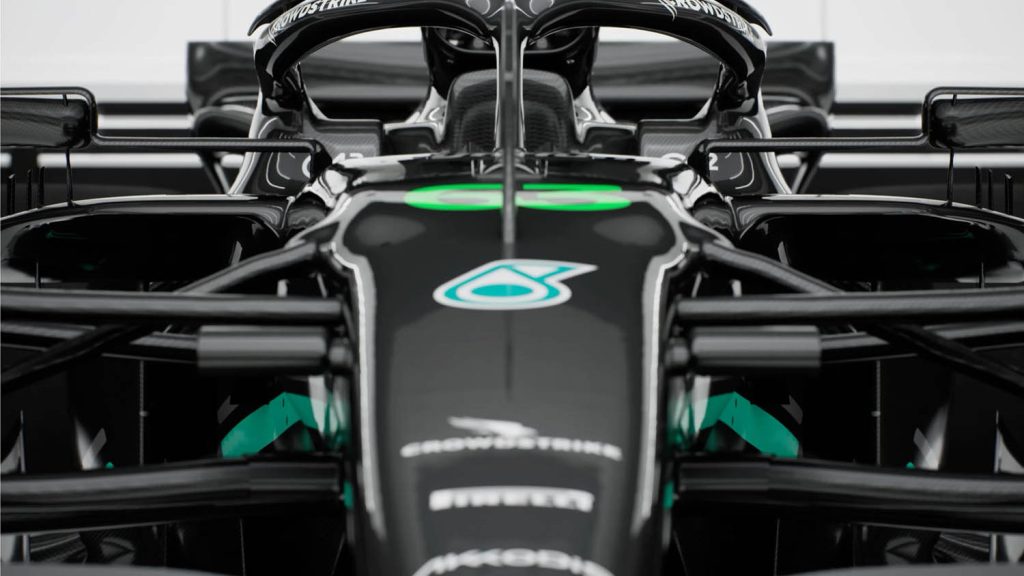Using real-time visualisation technology to build digital twins has changed the way that digital agency Collective works to build eye-popping content for its clients, as Stephen Holmes discovers
Product visualisation has never been more powerful. In a world populated by screens, rendered images play a vital role in enabling designers and manufacturers to communicate about the products they create.
Building realism into those renders, meanwhile, remains a critical task. Getting the smallest details right in the face of tight deadlines and mounting hardware requirements can be a tricky balancing act.
None of this is new to the team at London-based multidisciplinary creative agency, Collective. The company works with brands that include Mercedes-F1, the NHS, Avis Budget Group and Unilever, among many others, to create eye-popping visuals, marketing and storytelling.
But when DEVELOP3D sits down with Collective director Stephen Barnes and his colleague Stephane Bourez, a motion graphic designer and creative technologist at the company, it isn’t their award-winning campaigns or rendering credentials that the pair are most keen to discuss, but their work on digital twins.
Through the combined use of Unreal Engine, Nvidia’s GPU power and the USD file format, the team at Collective is building these digital twins in the form of visual assets that transform not only where the digital renders of products can be used, but also the process by which creative campaigns are devised.

Getting creative
The story goes back some four years, to when Collective pitched car rental giant Avis with its idea for a project. The client, which was looking to boost its European presence, loved the idea, but also wanted the project delivered within a six week timescale.
That caught the attention of Bourez and Collective’s R&D division, which had been experimenting with using Unreal Engine since as far back as 2014 to build render assets and scenes. Taking a leap of faith, Collective put the technology to work on this real-life project – and the results were a revelation.
“That, for us, was the lightbulb moment,” says Barnes, of the realisation that these tools could deliver photo-real content in an incredibly expedient way. “Once we were in Unreal, it was like we had complete control. We built this universe, if you like, and everything else.”
As well as enabling the team at Collective to work in real time with scenes and assets, they could repurpose these deliverables later on, with all the data packaged within the USD file. “That was the moment when we realised, ‘This is really powerful.’”
Understanding USD
While utilising real-time 3D technology such as Unreal Engine and Nvidia Omniverse to create and manage 3D assets was a revelation for Collective, the company found it much harder to explain to its clients.
“You’d start talking about it and you’d see their faces just melting,” Barnes laughs. “It’s a really broad church and you can do a lot with it.”
Adds Bourez: “Our first reflex was, ‘Wow, we can do this, we can do that!’ We were so excited that we were sharing all of it to the clients, and this is why we were losing them.”
The pair explain that the process is quicker, but not massively quicker, than creating assets in 3D using Autodesk Maya or SideFX Houdini, and the cost is no lower. But as the client begins to build up a library of assets to be deployed across screen, print and more through the USD format, the approach quickly gains momentum.
In other words, says Barnes, you don’t necessarily see all the benefits of this approach on the first go. It took over a year for Collective to really drill down and identify how to explain these benefits to clients.
Part of this process involved inviting clients to sit alongside Collective’s designers and getting their opinions in real time. By exploring their tastes and preferences in this way, and making tweaks and changes in front of them, says Bourez, the clients would be amazed at the results.
Collective now actively invites clients into these collaboration sessions, says Bourez, “because we know they’re going to have a great time!”
Letting them see the power of the technology and feel engaged with the project, he adds, is a huge bonus. It creates buy-in on concepts early on, because the client can directly change lights, camera angles, move assets and more.
“It becomes theirs!” says Bourez. “In a shop, if you have the product in your hands, you’re more than half-way towards buying it. This is the same thing, but with an abstract world.”

A new strategy
Creating a library of digital twins is extremely powerful, allowing the same universal asset to be platform-agnostic and therefore used in print, or at super high-resolution for billboards, or for interactive experiences, or even inserted into a movie.
The second benefit of these assets is that the creatives using them don’t have to start from scratch anymore.
For example, working with client Victorinox, it might have taken multiple passes in the past to achieve the correct tint of red and level of glossiness associated with the handles of its iconic red pen knives.
Today, with a universal asset in the USD format, a digital twin can retain all this data, along with a history of all the versions approved by the client.
What Collective is creating is not simply a hero product render, but new staging environments and product variants, allowing for seasonal variations or adjustments for different regions, all packaged into a single digital file.
This brings sustainability and savings as part of the longterm benefits, saving on multiple real-world photoshoots and recordings for each different medium.
The team at Collective explains these benefits now whenever they go into client meetings. Instead of thinking about new product launches, clients are encouraged to consider the rest of the year and how they’re going to be able to reuse every digital asset again and again.
“There is a bit of drawback to overcome, as there will be upfront costs to consider, because you’re building things you don’t already have,” says Bourez. “But once you have this powerful library, you never have to start from scratch.”
The process has meant a different strategy for Collective in terms of creating content. The procedural methods and tools available in Unreal mean the agency can build a batch render pipeline that takes all the cameras and renders them automatically, a process it used for Victorinox.
“If you have two different pen knives, and for each you want a front view, a top view, a side view, a three-quarter view and a 360-degree view, then yes, you can hire junior people and make them grind like slaves – that’s one way,” explains Bourez. “Or, you can just create a smart tool that’s going to do it for you. You press one button and go grab a slice of pizza or something!”
Anytime you find friction or a bottleneck in your pipeline, he adds, “there’s probably a good chance that you can solve it and make it even more powerful by coding the routine and by being smart about it instead of brutal.”
With a team mantra of ‘Build once, use many’, the move has made Collective’s visualisation work even more powerful. Designers get to be more creative with ideas, now that they no longer have to waste time building assets. And the end results speak for themselves, across pages and screens of all sizes.
This article first appeared in DEVELOP3D Magazine
DEVELOP3D is a publication dedicated to product design + development, from concept to manufacture and the technologies behind it all.
To receive the physical publication or digital issue free, as well as exclusive news and offers, subscribe to DEVELOP3D Magazine here








